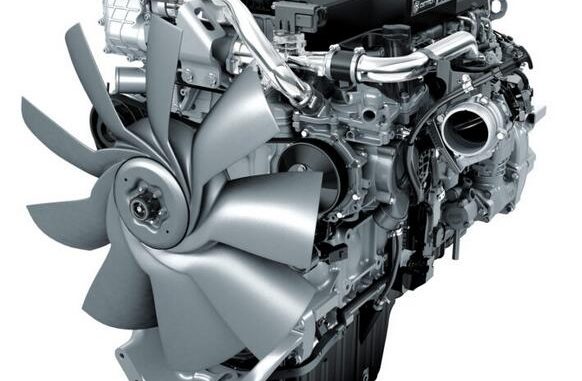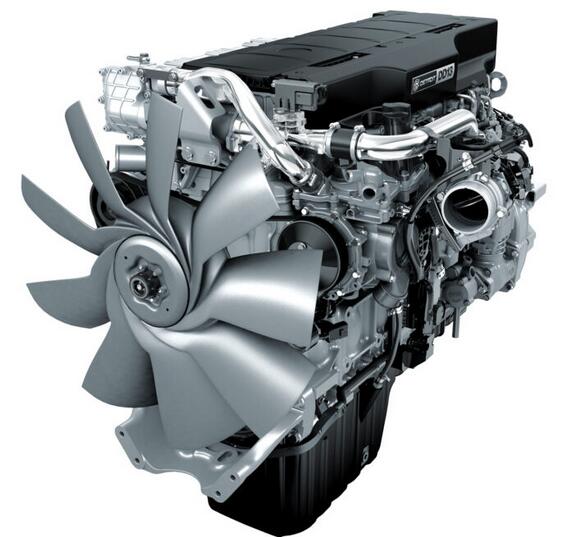
Experiencing excessive blue smoke in your Detroit EPA07 GHG14 engine can be a cause for concern. Blue smoke indicates oil consumption, which can lead to engine damage if not addressed promptly. In this article, we will guide you through the steps to diagnose and solve the issue of excessive blue smoke in your engine.

Preparations:
2024 Detroit Diesel Diagnostic Link DDDL 8.19 8.09 Free Download
JPRO DLA+ 2.0 Adapter
NEXIQ USB Link 2 Adapter
Procedures:
Follow these steps to identify and resolve the excessive blue smoke issue:
1. Perform a Crankcase Pressure Test:
– Check for excessive crankcase pressure. If found, proceed to step 2.
– If no excessive crankcase pressure is detected, proceed to step 3.
2. Perform a Relative Compression Test:
– Use the DDDL 7.X software (or higher) to perform a relative compression test.
– If the test reveals low compression in any cylinder, inspect for worn or damaged cylinder kits. Repair as necessary.
– If all cylinders show normal compression, proceed to step 3.
3. Check for Oil in the Exhaust System:
– Inspect the interior of the exhaust S-pipe (DD15) or the exhaust flanged manifold (DD13) for oil.
– If oil is found, proceed to step 4.
– If no oil is found, skip to step 7.
4. Inspect the Turbocharger and Inter-Stage Duct:
– Remove the turbocharger and inter-stage duct (if equipped).
– Inspect the exhaust manifold for oil.
– If oil is found in the inter-stage duct (DD15) or the exhaust flanged manifold (DD13), but none in the exhaust manifold, proceed to step 5.
– If no oil is found in the inter-stage duct, move to step 6.
– If oil is found in the exhaust manifold, skip to step 7.
5. Inspect the Turbocharger for Damage:
– Thoroughly inspect the turbocharger for any signs of damage.
– If the turbocharger appears to be defective, replace it.
– Check for any air inlet restrictions.
– If the turbocharger is okay and there are no inlet restrictions, proceed to step 7.
6. Check the Axial Power Turbine (APT) Air Pressure:
– Use an air pressure gauge to measure the pressure output of the APT air solenoid.
– Ensure the APT air pressure is between 3 and 7 psi.
– If the pressure is within the specified range, replace the APT.
– If the pressure is out of specification, change the APT air solenoid.
7. Determine the Source of Oil:
– Remove the exhaust manifold to determine if the oil is coming from one cylinder or multiple cylinders.
– If oil is coming out of a particular cylinder, check the valve seals, stems, and guides for wear. If they are okay, proceed to step 8.
– If oil is coming from multiple cylinders, inspect the air inlet and Charge Air Cooler (CAC) pipes for oil from the compressor side of the turbocharger. If no oil is found, move to step 8.
8. Inspect the Cylinder(s) for Damage:
– Remove the cylinder head assembly.
– Inspect the cylinder(s) for any signs of damage.
– Repair or replace the damaged cylinder(s) as necessary.
Conclusion:
By following these steps, you can effectively diagnose and solve the issue of excessive blue smoke in your Detroit EPA07 GHG14 engine. Remember to use the proper diagnostic tools and consult the appropriate repair manuals for detailed instructions. Timely action can help prevent further damage and ensure optimal engine performance.
More repair cases for Detroit Diesel engines,please refer to:Detroit Diesel Engine Repair
Leave a Reply